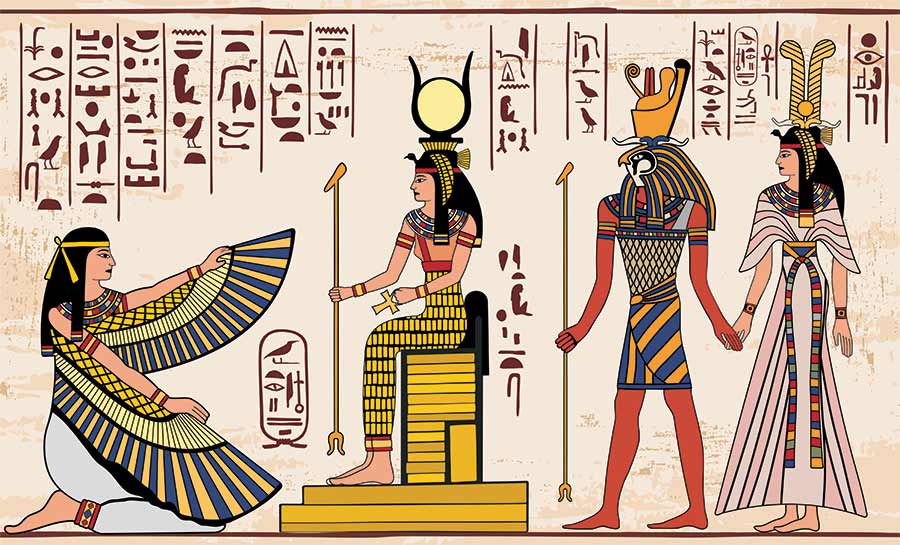The ancient Egyptians were known for many things, but their bathrooms weren’t one of them. That being said, when you gotta go, you gotta go, and the ancient Egyptians had to go somewhere. Let’s take a brief look at the history of toilets throughout Egyptian history, starting from the ancient days to modern times.

Ancient Egypt and Bathrooms
Homes in ancient Egypt tended to reflect the economic and social status of the tenant. For the wealthier classes, this meant separate bathrooms that included the proper toilets of the day. Back in ancient days, Egyptian toilets were constructed of limestone, as that’s what was available. In poorer households, the toilet was simply a stool made of wood with a small hole dug into it. Regardless, all toilets had a small container that sat beneath the seat. The container was filled with sand and would regularly be emptied. Wealthier people had servants to manually empty the containers, while lower classes emptied it themselves.
Of course, the ancient Egyptians did not have running water, no matter how rich they were. This luxury just wasn’t available at the time. What the wealthy had instead was a sort of wet room or shower room. There would be a drain on the floor that allowed accumulated water to escape, and the room allowed people to bathe and relieve themselves. Sewers also weren’t a thing yet, so the bathroom waste was typically dumped into a river or onto the street. You can imagine what that would smell like. Interestingly, Egypt’s sewer taxes are among the lowest in the world today! The waste might also be dumped onto the fields to use as fertilizer if the situation allowed.
The Evolution of Plumbing
The Nile River holds great importance in Egypt, and back in the day, it was just about the only reliable water source. In ancient times, the ruler Menes ordered the construction of basins to collect flooded water, as well as canals, irrigation systems, and wells. This also tied in with the importance of water purification and rituals that were important in Egypt at the time. As such, drainage systems were pretty impressive for the time, with pipes being made of straw and clay, or copper alloys.
Running water, as we know it today, made its way to Egypt in the 1860s. Private European investors created water companies in Alexandria and Cairo. Foreign aid from the United States in the 1970s led to greater sanitation efforts, which carried on for the next couple of decades. Today, the Ministry of Water Supply and Sanitation Facilities oversees water policy and regulation.
Modern Egyptian Toilets
Today, you’ll find modern squat toilets, but instead of toilet paper, rinsing with water is the norm. In fact, using toilet paper is seen by many to be unsanitary, as the paper can stick to you and do a poor job of cleaning things up. Besides that, the plumbing in Egypt isn’t always set up to accommodate balls of toilet paper. Egyptians prefer to use a shatafa, a little bidet sprayer, which may be attached to the toilet bowl or the wall via a small hose. A knob allows the user to turn on the spray of water and get things nice and clean down there. You might notice that the hoses and knobs are always to the left of the toilet. This is because Egyptians shake hands and eat with their right hand, so the left is reserved for more private duties.
In fact, Egyptians are so accustomed to the shatafa, that it’s not unusual for them to bring along a portable bidet-type sprayer when they travel internationally. Hey, don’t knock it until you try it.
As for public restrooms in Egypt, they may be a bit off putting to visitors from other countries. If the place you are visiting is not tailored to Western tourists, then you might find yourself facing a squatting toilet, which is considered the norm among Egyptians. In addition, women are usually escorted to a free bathroom stall rather than having the freedom to choose which stall they go into. For both men and women’s restrooms, it is not uncommon for someone to be waiting behind you at the sink to offer a towel for hand drying. It’s weird, but courteous.
Sources:
whynotegypt.com/egyptian-toilets-shatafa
ancientegyptianfacts.com/ancient-egyptian-toilets.html
plumbingsupply.com/pmegypt.html
alternativeegypt.com/Travel-Information/Toilets-in-Egypt.html
